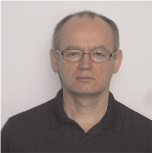Low-frequency laboratory measurements of the elastic properties of sandstone flooded with supercritical CO2
Vassili Mikhaltsevitch A , Maxim Lebedev A and Boris Gurevich ADepartment of Exploration Geophysics, Curtin University.
The APPEA Journal 53(2) 484-484 https://doi.org/10.1071/AJ12095
Published: 2013
Abstract
This extended abstract presents the results of the first low-frequency experiments conducted on a sandstone sample (Donnybrook, WA) flooded with supercritical CO2 (scCO2). The experiments investigated the effects of scCO2 injection on the elastic and anelastic properties of the rock. The sandstone sample (porosity—11.4%, permeability—0.28 mD) was cut in the direction orthogonal to a formation-bedding plane and tested in a Hoek’s triaxial pressure cell equipped with the means for independent control of pore and confining pressures.
The pore and confining pressures were set up at 10 and 31 MPa correspondingly. The low-frequency system and the pump comprising of scCO2 were held at a temperature of 42°C. Supercritical CO2 was injected into the sample preliminary saturated with distilled water. The amount of the residual water in the sample after the scCO2 injection was about 40% of pore volume.
The elastic parameters obtained for the sample with scCO2 at frequencies from 0.1 to 100 Hz are very close to those for the dry sample. Some discrepancy in calculated acoustic velocities are caused by the difference in water and scCO2 densities. The measured extensional attenuation is larger when the sample is saturated with scCO2. The applicability of Gassmann’s fluid substitution theory for the interpretation of obtained results was also tested during the experiments.

Vassili Mikhaltsevitch holds an MSc and a PhD (physics, mathematics) from Kaliningrad University, Russia. He worked at Kaliningrad University from 1982 to 1998. From 1998 to 2008, he was a senior research scientist with QRSciences, a research and development company located in Perth, Australia. For two years afterwards, he was a senior core analyst in Core Laboratory of Australia. In April 2010, he joined the Department of Exploration Geophysics at Curtin University as a research fellow. He has authored 36 journal papers, 21 patents, and 18 refereed proceedings. |

Maxim Lebedev received his MSc (physics and engineering) (with distinction) from Moscow Institute (University) of Physics and Technology in 1986 and PhD (physics) from the same institution 1990. He was a researcher at the Institute for High Temperatures Russian Academy of Science (1986–97). He was a visiting scientist at the National Institute of Advanced Industrial Science and Technology in Japan (1997–2005), and a research fellow at the University of Canterbury in New Zealand (2005–7). He is now associate professor and the director of rock physics laboratory at Department of Exploration Geophysics, Curtin University, Australia. |

Boris Gurevich received an MSc (exploration geophysics) from Moscow University in 1981 and PhD (geophysics) from the Institute of Geosystems in Moscow in 1988. From 1981 to 1993, he worked as a researcher for the Institute of Geosystems. He was a visiting scientist at the Geophysical Institute of Karlsruhe University (1992–3) and at Birkbeck College of London University (1993–4). In 1995–2000, he worked as a research geophysicist at the Geophysical Institute of Israel. He is now professor and head of department of exploration geophysics at Curtin University, Australia, and the director of Curtin Reservoir Geophysics Consortium (CRGC). |
References
Lei, X., and Xue, Z. (2009). Ultrasonic velocity and attenuation during CO2 injection into water-saturated porous sandstone: measurements using difference seismic tomography. Physics of the Earth and Planetary Interiors 176, 224–34.Mikhaltsevitch, V., Lebedev, M., and Gurevich, B., 2011—A low-frequency apparatus for characterizing the mechanical properties of rocks. 73rd European Association of Geoscientists and Engineers (EAGE) Conference and Exhibition, Vienna, Austria, 23–26 May, 172793.
Rochelle, C.A., Czernichowski-Lauriol, I., and Milodowski, A.E., 2004—The impact of chemical reactions on CO2 storage in geological formations: a brief review. In: Baines, S.J., and Worden, R.H. (Eds.) Geological Storage of Carbon. London, UK: Geological Society Special Publications, 233, 87–106.
Zemke, K., Liebscher, A., and Wandrey, M. (2010). Petrophysical analysis to investigate the effects of carbon dioxide storage in a subsurface saline aquifer at Ketzin, Germany (CO2SINK). International Journal of Greenhouse Gas Control 4, 990–9.
Foster, A., Norden, B., Zinck-Jurgensen, K., Frykman, P., Kulenkampff, J., Spangenberg, E., Erzinger, J., Zimmer, M., Kopp, J., Borm, G., Juhlin, C., Cosma, C, and Hurter, S. (2006). Baseline characterization of the CO2SINK geological storage site at Ketzin, Germany. Environmental Geosciences 13, 145–61.


